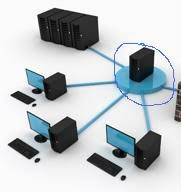Thursday is a big day for Windows users. Microsoft is finally making Windows 7 publicly available, and the number of pre-orders for the operating system on Amazon.com has already surpassed orders for Harry Potter in the U.K.
Not bad for an operating system that costs $120 and doesn’t even have any magic wands or dragons in it.
That’s a good indicator that a lot of people are upgrading, and we’re sure there will be even more that follow after consumers spread the word about the vast improvements in Windows 7 over its predecessors. Here’s a simple guideline of what you should know to ensure your upgrade process is smooth — from purchase to install.
1. You should get this upgrade
We’ve written about Windows 7’s strong points as well as its weaker points. On balance, we’re confident saying this is the best Microsoft operating system yet. If you’re running any earlier version of Windows, you’ll almost certainly want to upgrade — and you should feel no hesitation about buying new computers preloaded with Windows 7.
2. But you’ll have to pay for it
Apple offers an upgrade to its latest operating system, Snow Leopard, for $30 — and you can even take advantage of it if you don’t have the previous version, Leopard. Not so with Microsoft: You’ll need to pay $120 for the upgrade — or even more, depending on which version you get. (Unless you’re a smart shopper and can find a discounted price. See tips 6 and 7 below for details on which version to buy and how to find discounts.) As with previous versions of Windows, Microsoft has created a bewildering array of variations.
3. Double-check compatibility with your hardware
Paranoid about losing access to some of your third-party accessories and software after upgrading? You should be, at least a little bit. Microsoft claims Windows 7 will work smoothly with most third-party gadgets and software, but to be on the safe side, you should check out the Windows 7 Upgrade Advisor. The tool automatically scans your system and provides a report of any potential issues, as well as steps to resolve them.
4. Scout for computers shipping with Windows 7
If you’ve been shopping for a new computer — but waiting for Windows 7 to come out first — there’s a Microsoft tool to help search for new computers that ship with Windows 7. It’s called PC Scout, and it searches for computers based on your preferences. As of this writing, the results don’t bring up Windows 7 systems (since Windows 7 isn’t officially released yet), but the website clarifies that all the computers listed in the database are eligible for a Windows 7 upgrade. That means if you purchase one of those computers today, all you have to pay is $10 for shipping, and you get the Windows 7 upgrade free. By the time Windows 7 ships, the PC Scout should be showing results for computers that include Windows 7.
Amazon customers shopping for Windows 7 computers: There’s a web page just for you. Amazon breaks down a list of netbooks, notebooks and desktops shipping with Windows 7, so definitely check those out.
5. Upgrading from XP? Back up your data, wipe and migrate
Windows XP users cannot do a straight upgrade; they’ll have to back up their files, format their hard drive and perform a clean install. After your fresh copy of Windows 7 is on your computer, Microsoft offers a tool called Easy Transfer to migrate your files.
(If you’re a Vista user, you’ll be able to upgrade without doing a clean install — though fresh installations are generally recommended for optimal performance anyway whenever you switch to a new operating system.)
6. Know what you want
Disregard the awful, intimidating Windows 7 upgrade chart when you’re picking a version to buy. Choosing the right version really isn’t as complicated as Microsoft has made it sound in the past. Consumers: The vast majority of you should go with Windows 7 Home Premium. Business users: Most of you will want to go with Windows 7 Professional. (There’s a Windows 7 Ultimate edition, but that’s aimed at a very niche audience of ultra geeks who want to do everything they could possibly imagine doing with their computers.) Again, if you want to be safe, use the Upgrade Advisor to check your hardware and software compatibility.
7. Look for limited-time discounts
If you’re buying Windows 7 while it’s brand new, you shouldn’t be paying the full price. Microsoft and its partners are holding a weeklong sale called “7 Days of Windows 7.” Companies offering Windows 7 discounts with Microsoft include Best Buy, Dell and Acer. You can sign up to hear about daily offers on Windows.com. Also, you can check discount-aggregation sites such as PriceGrabber.com or Froogle.com to find the cheapest Windows 7 deals.
Thursday, October 22, 2009
Subscribe to:
Post Comments (Atom)

No comments:
Post a Comment